Preparing for a Patient-Centered Medical Home (PCMH) audit can seem daunting, but with the right approach, it doesn't have to be. This guide aims to demystify the process and offer practical advice for healthcare administrators, PCMH participants and medical practices. Focusing on DataGen's Medical Practice Consulting services, we'll show you how to streamline annual reporting to ensure core criteria are consistently met in your workflow, so you can focus on coordinated care management and quality improvement within your care team or healthcare system.
Understanding the PCMH audit
PCMH annual reporting is essential for maintaining the integrity, effectiveness and recognition for the National Committee for Quality Assurance’s (NCQA) PCMH model. Each year, practices submit requirements to renew their recognition, showcasing a small portion of documentation across six concept areas. However, a PCMH audit requires a more comprehensive review. About 5% of annual reporters are randomly selected for an audit, which tests the stability of practices within the program and ensures that the program’s intent is being upheld.
The importance of being prepared
An audit should not be feared. Instead, it should be an opportunity to showcase your dedication to patient-centered care. Here’s why it matters:
Validation of your practice’s processes.
Ensuring consistency in care delivery.
Maintaining recognition within the NCQA PCMH framework as well as Health Equity/Health Equity Plus (HEA/HEA+) and Patient-Centered Specialty Practice (PCSP).
How to prepare for a PCMH audit
Step 1: Evaluate your current practices
Annual reporting: Avoid treating it as a checklist. Thoroughly assess all documentation, roles, responsibilities and workflows foundational to the medical home.
Policy updates: Ensure policies reflect current practices, technologies and workflows. Also, confirm that actions align with stated policies.
Team education: Disperse PCMH education throughout the team to foster understanding and support.
Step 2: Develop a continuous preparation strategy
Preparation for an audit should be ongoing. PCMH shouldn’t be treated as a project but as a way of providing care. This approach minimizes preparation needs and makes data and documentation easily accessible.
Step 3: Use essential tools and resources
Criteria plans and reporting templates ensure clarity during audits. Using NCQA-friendly tools simplifies the process.
Communication with NCQA reviewers can help address challenges such as system or EMR changes.
Team involvement in audit preparation
Key roles and responsibilities
The clinical and PCMH lead should guide the process, supported by information technology staff and frontline patient interaction personnel. This team-based approach intertwines clinical decision support with individuals directly involved in the continuity of care.
Training and playbook use ensures all staff members know their roles and responsibilities and also have a go-to guide regarding all the core criteria of the PCMH concepts.
Advice for staff readiness
Ongoing preparation and adherence to defined policies are crucial. A well-prepared team will handle audits with confidence.
Prevent audit stress with DataGen
The first PCMH audit doesn’t have to be overwhelming. By integrating these tips and tricks into your practice, preparing for a PCMH audit can become a manageable and routine part of your workflow. For personalized assistance and to ensure your practice is always audit-ready, consider exploring DataGen's Medical Practice Consulting services.
Our services not only help achieve and sustain NCQA PCMH recognition, but they also provide guidance through annual reporting and the audit process. With a 100% success rate in NCQA submission and audits, our services are conducted as though every client is going through an audit, decreasing shock value and enhancing preparedness. Get ahead of NCQA audits and annual reporting requirements with DataGen.
This content is for informational purposes only. It has been partially generated from an AI language model, which may not always be exhaustive or tailored to individual circumstances. We encourage you to contact one of our experts for more information. We assume no liability arising from any use of this content.


Comments
Post a Comment